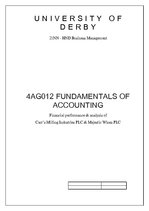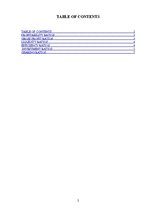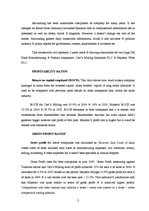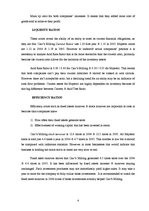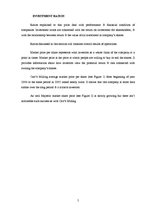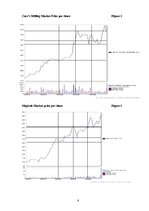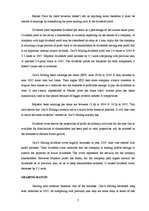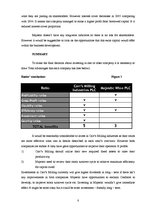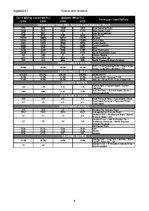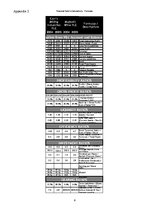-
Fundamentals of Accounting
| Nr. | Sadaļas nosaukums | Lpp. |
| TABLE OF CONTENTS | 2 | |
| PROFITABILITY RATIOS | 3 | |
| GROSS PROFIT RATIOS | 3 | |
| LIQUIDITY RATIOS | 4 | |
| EFFICIENCY RATIOS | 4 | |
| INVESTMENT RATIOS | 5 | |
| GEARING RATIOS | 7 |
Accounting has been unalienable component of company for many years. It has changed its format from manually calculated financial data to computerized information that is presented as well by tables, charts & diagrams. However it doesn’t change the root of the matter. Accounting gathers daily transaction information, divide it into accounts & produce monthly & yearly reports for government, owners, shareholders & investors etc.
This coursework will represent 2 years ratios & drawing conclusions for two large UK Food Manufacturing & Product companies: Carr’s Milling Industries PLC & Majestic Wine PLC.
Return on capital employed (ROCE). This ratio shows how much money company managed to make from the invested capital: share holders’ capital & long terms liabilities. It used to be compared with previous years results or other companies data within the same industry.
ROCE for Carr’s Milling was 20.8% in 2004 & 16% in 2005. Majestic ROCE was 32.2% in 2004 & 29.7% in 2005. ROCE decreases in both companies and it is related with investments from shareholders that increase Shareholders Account but extra capital didn’t generate bigger turnover and profit at first year. Majestic’s profit rate is higher but it could be related with industries return.
Gross profit for above companies was calculated as Turnover Less Costs of Sales where costs of sales included such costs as manufacturing expenses, raw materials, labour, selling, marketing & other expenses but it hasn’t been specified in Annual Reports.
Gross Profit rises for both companies in year 2005. Gross Profit measuring against Turnover shows that Carr’s Milling level of profit achieved 15% for each £ of sales in 2004. It increased for 4.3% in 2005 related to last period. …
darbaa analizeti Carr’s Milling finansialie raditaji par 2006gadu. darbs sanemis augstako vertejumu. ieklauti finansialo raditaju skaidrojumi un analize attiecigajam uznjemumam. 1500 vardu

